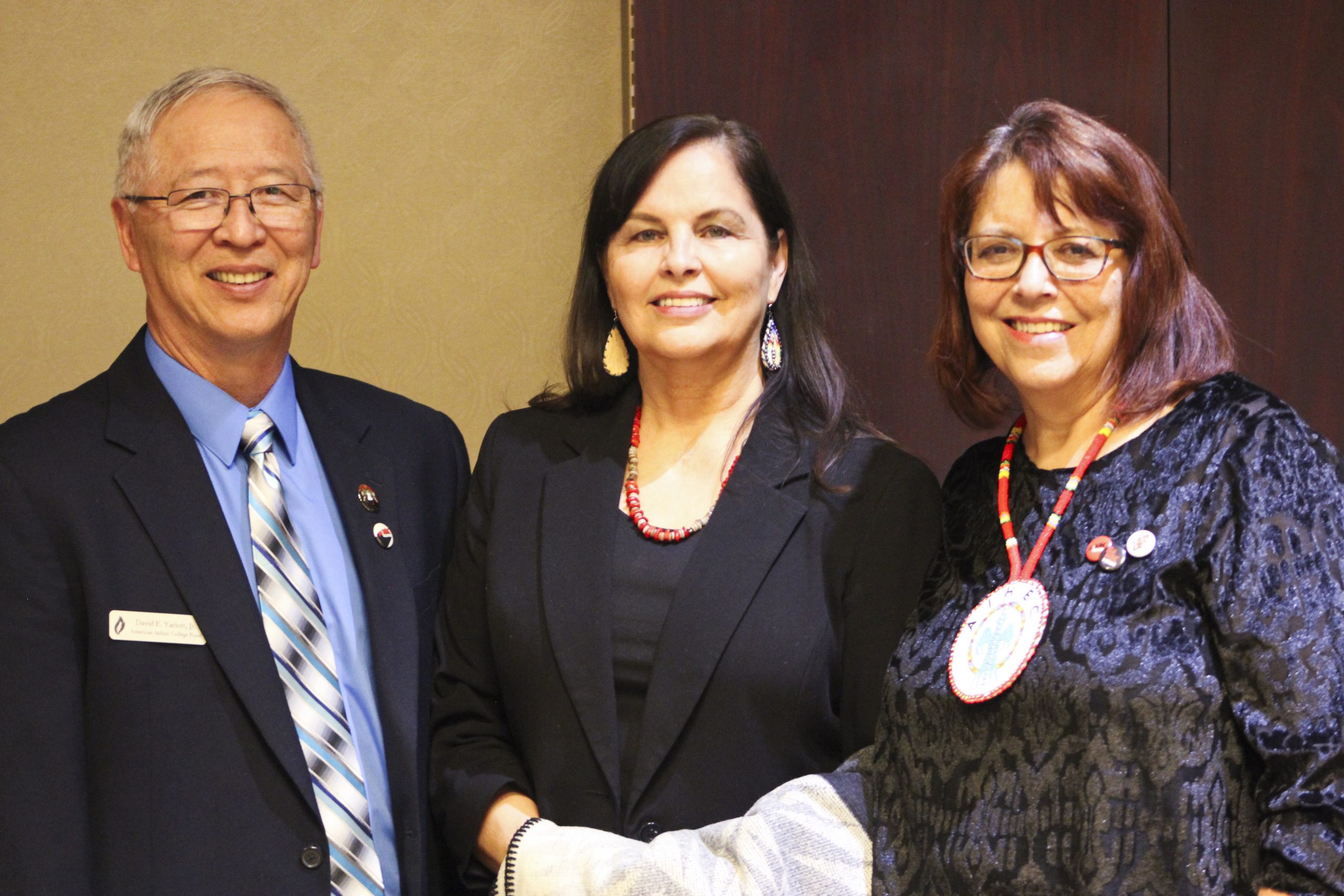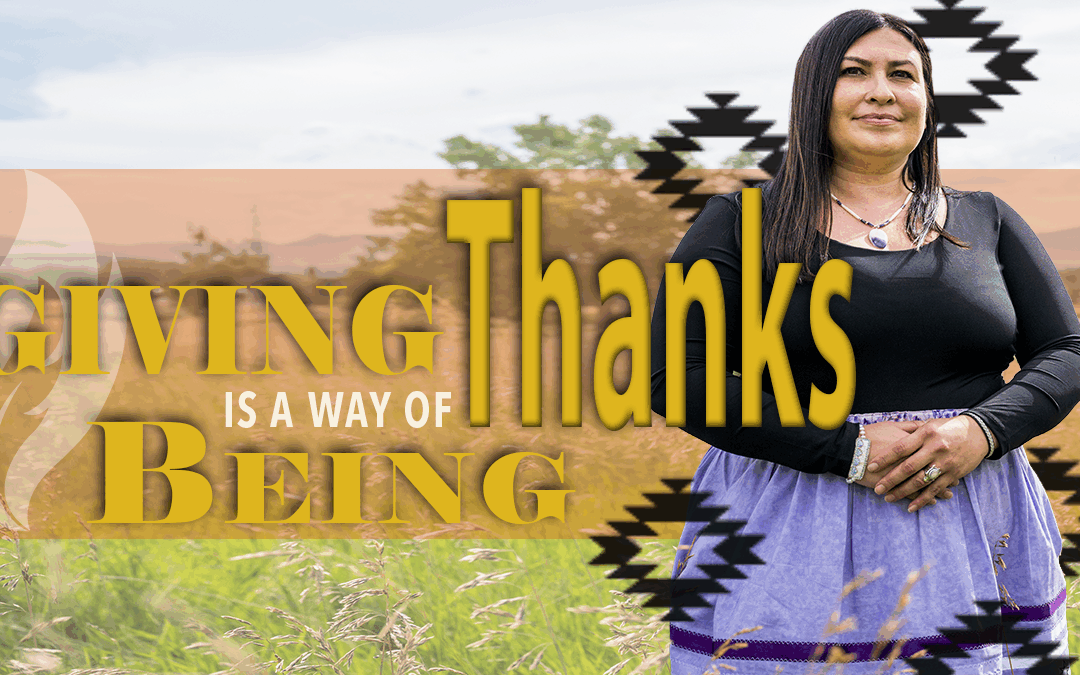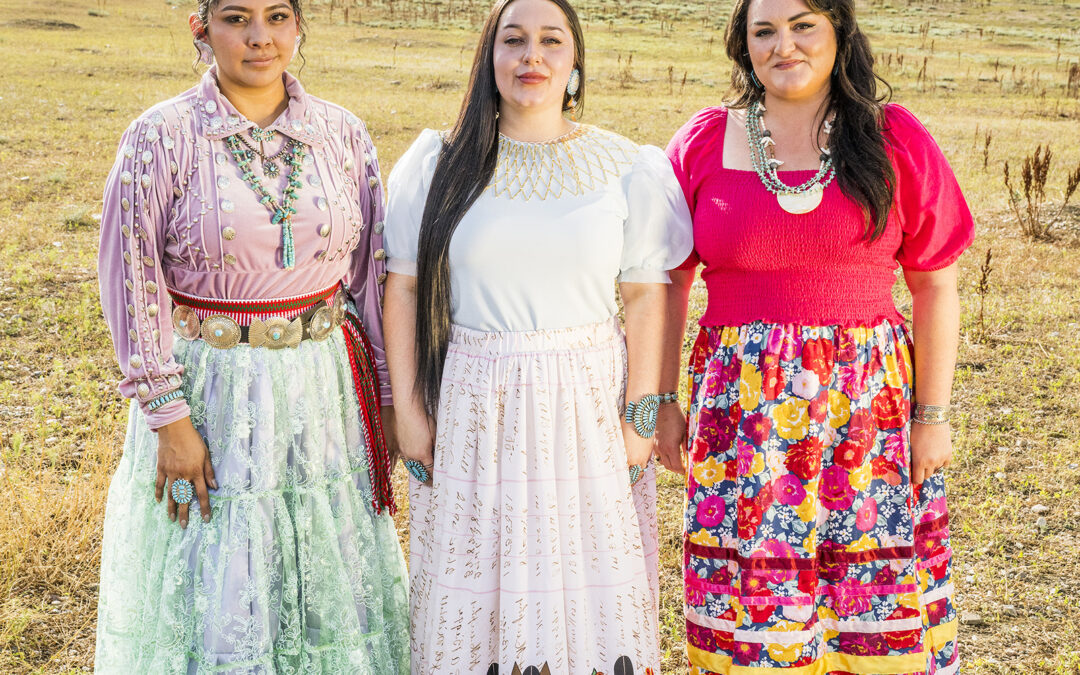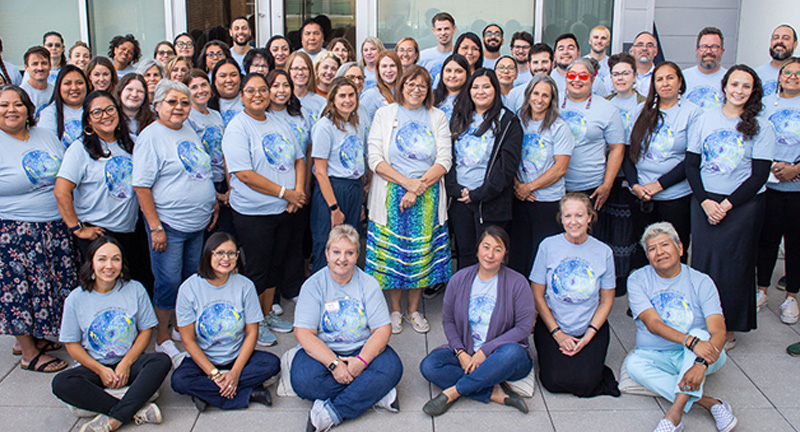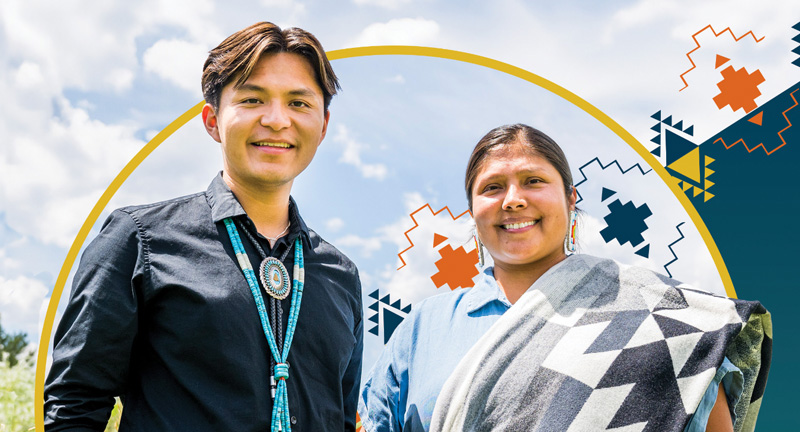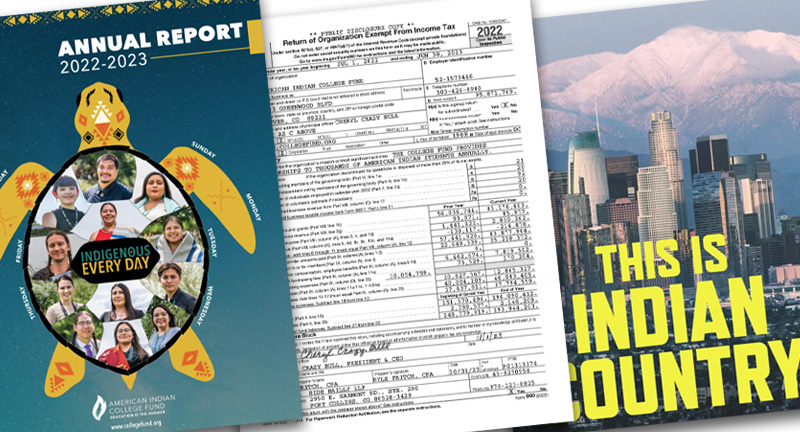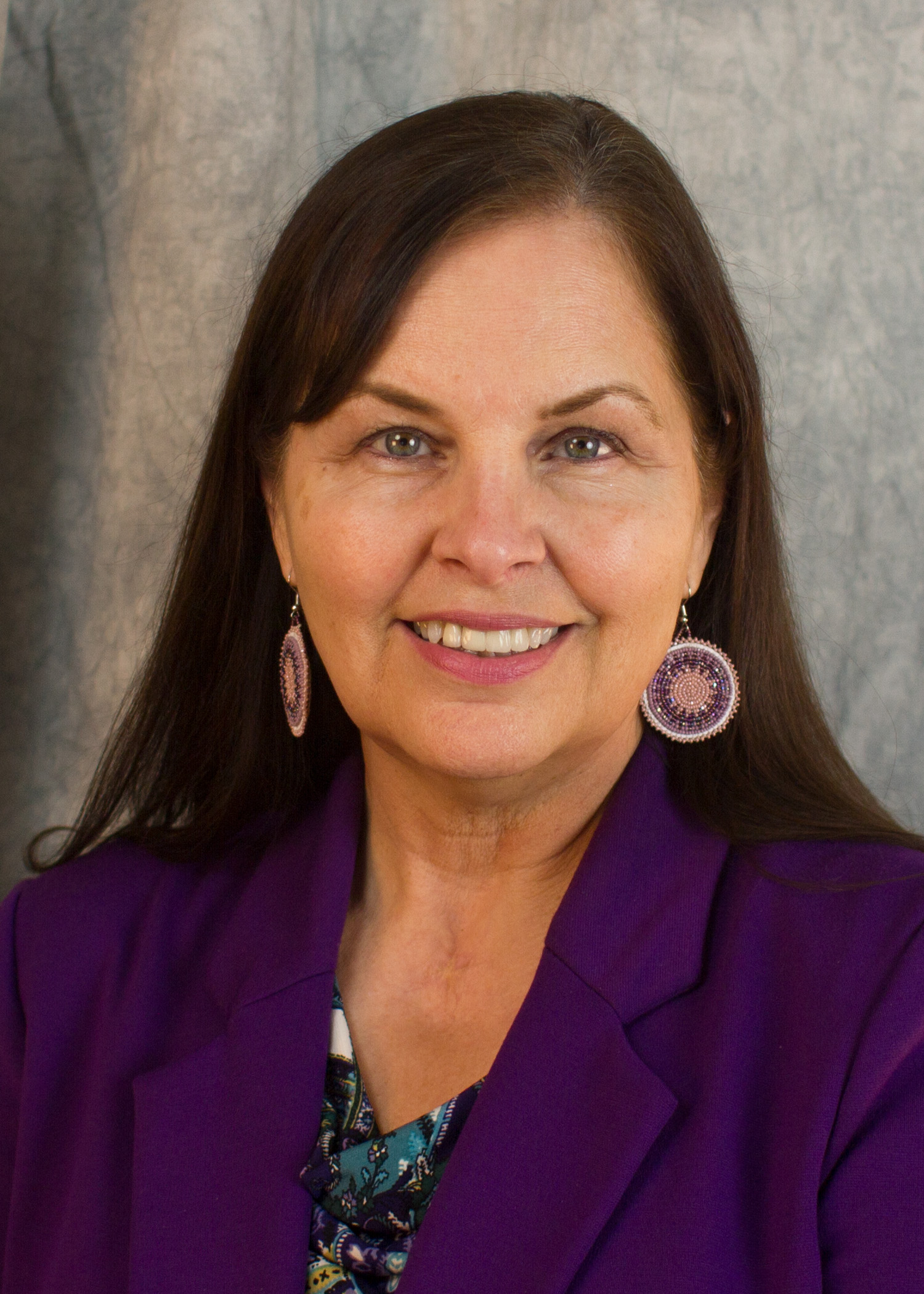
Dr. Cynthia Lindquist, President of Cankdeska Cikana Community College in Ft. Totten, North Dakota.
Dr. Cynthia Lindquist, President of Cankdeska Cikana Community College in Ft. Totten, North Dakota, says she never set out to be a tribal college president. “College was a dream for me as a high school kid. I was the oldest of 13 kids, and there was no money for college.”
But thanks to her parents and both sets of grandparents who raised her with a strong work ethic, college is exactly where she landed, and it lead to a career in higher education.
Dr. Lindquist was honored by the American Indian College Fund for her outstanding contributions to Native higher education at its 2017-18 Student of the Year reception in Bismarck, North Dakota.
The program, sponsored by the Adolph Coors Foundation, awarded Dr. Lindquist a $1,000 honorarium and each student of the year a $1,200 scholarship.
After graduating from high school Lindquist went to work for Sioux Manufacturing Corporation (SMC) as a secretary clerk in Ft. Totten. When the company was established, it was managed by white men from the Brunswick Corporation. But her tribe, the Spirit Lake Dakota, set the goal to train tribal members to become leaders in the company. She jumped at the chance for an opportunity for a higher education.
“I left being a secretary/clerk to get an undergraduate degree at University of North Dakota, and lo and behold, who was there but Karen Gayton Swisher and David Gipp (Who later became fellow tribal college presidents)! I was in college with other Indians!”
Lindquist says at the time there were not many other American Indian college students. But she persisted with her coursework from the 1970s to early 1980s, and returned to SMC with a bachelor’s degree in 1981. She became a manager.
“After five-six months, our chairman at the time, Elmer White, asked me to work for the tribe as the Health Director Planner. And that is how it all began. I was in that role for seven years. I got to know all about Indian health and health systems,” she says.
She went on to earn her master’s degree in public administration with an emphasis on Indian health systems from the University of South Dakota. For two-and-a-half years she studied while working and driving every two months to Rapid City, South Dakota—a 9- to 12-hour commute, depending on the weather.
“It was really intense. We got stuck in blizzards, you name it.” But she found that the opportunity for interacting with other Natives in the program were better this time: 15 of the 30 people in the program were Native, including Lynn Davis, the spouse of Carol Davis, who was a TCU founding member and Vice President at Turtle Mountain Community College for many years along with former President Carty Monette.
Like many of the people in her cohort, Lindquist says, “We never aspired to our roles. We were in the right place at the right time. Opportunity opened up. The self-determination movement was beginning around the late seventies and early eighties, and Indian Health Service (IHS) was working hard to establish Indian health programs.” Lindquist’s health career path eventually took her to doing Indian health work at the national level for IHS, working on a traditional medicine initiative for the agency. She was also the first political appointee for IHS, working as a Chief of Staff for the Director for the Clinton administration before returning to North Dakota, where she was appointed by Governor Ed Schafer as the Director of the North Dakota Indian Affairs Commission.
At the time of this interview, Lindquist had just returned from Washington D.C. for the American Indian Higher Education Consortium meetings at which tribal college presidents, faculty, staff, and students from across the country visited Capitol Hill to speak to elected officials to request funding support for TCUs and Native higher education.
Lindquist said, “When I reflect about last week, I realize we have come so far. Our students have a level of sophistication they didn’t have before. We do well to stress this while also emphasizing their culture, language, and Native values and what they mean. Education is really about being informed, seeing other sides, digging for information, while respecting other opinions and ideas and remaining grounded in our spirituality. Being Dakota means having a spiritual foundation, no matter what that is.”
During the time Lindquist was studying community medicine and rural health at Grand Forks working to establish an Indian health pathway to medical school, she was recruited by two tribal elders to apply for the position of president at Cankdeska Cikana Community College in her home community
The transition was a logical one. In addition to hard work being a family value, education is, too. Lindquist’s mother was on the CCCC Board of Regents and was also a CCCC graduate “way before I became president.” Lindquist also had experience there, having taught classes when she was the tribe’s health director/planner. She jumped at the chance.
“I have been there ever since. I love being back home, with my family, and with my Mom, who just turned 88 on Friday,” she said.
Things happen for a reason. Lindquist says her health care background equipped her perfectly for her role as a leader in a Native-serving higher education institution. “If people don’t have some concept of health and well-being, they cannot be a college student. You have to be physically, mentally, and spiritually healthy, and ask, ‘Am I a good role model?’”
Lindquist went on to earn a Ph.D. in educational leadership from the University of North Dakota in 2006. She used her educational path and healthcare grant-making experience to grow her campus. “I put in for every grant from multiple funding sources. I quadrupled the size of my campus in 15 years,” she says.
When she started at the college, it was housed “in a typical leftover federal building. The white walls were dirty and the building contained asbestos.” She wondered who would want to go to school there. After learning that abandoning the building was not an option due to financial investments the federal government and American Indian College Fund had made in it, she set to work cleaning it up.
“We made the renovations look seamless and tied the old in with the new,” she says. The campus buildings are now all connected, a necessity in the cold northern North Dakota winters.
In addition to physical growth, the college also doubled the number of graduates from when she started, maintains a reserve account, and has maintained spotless audits.
As a leader Lindquist says she is most proud of her college’s good data and transparency. “The community college belongs to the people. We want integrity there. We want to practice what we preach and give back to the community.”
Her employees share her commitment. Lindquist says they are devoted, resourceful, and efficient. “Ideally we should have one-third more employees, like a grant writer, a data specialist, and a transfer specialist. But we have good, qualified people. Our teachers drive 40-50 miles one way from small farming communities around the reservation. And when we have 40 graduates every May, we are as proud as could be. Many would not be college students without Cankdeska Cikana Community College.”
“There is a lot of historical trauma in our community. The suspicion of education in our communities still lingers. Slowly we are breaking it,” she says. She credits integrating prayer, culture, and language for that.
The role of a tribal college president isn’t just a job, it is a way of life for Lindquist. In addition to focusing her work on the Dakota way of life, her personal life reflects that, with a focus on prayer and family. She enjoys spending time in ceremonies and with her extended family of three children, eight grandchildren, and two great-grandchildren. She also enjoys gathering with other tribal college presidents, “Talking to each other, energizing each other, and helping keep things in perspective,” she says.
Lindquist’s Dakota name, Hoton Ho Waste Winyan, means Good Voice or Good Talk Woman, and was bestowed upon her in honor of her great grandmother. “To carry a Dakota name implies you speak the truth and from your heart,” she says.
And she carries it well.
“It’s good work. I am humbled and I am glad I am home and I am glad I got the experiences to be able to do what I do. It’s a privilege to do this work and know I have a team supporting me, all with the goal of student success.”

